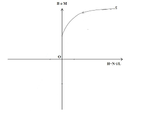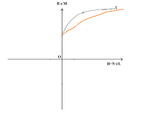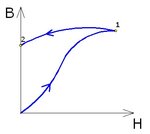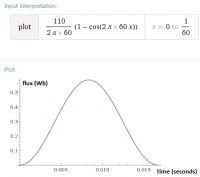julian403
Full Member level 5

I was studying the dc-dc converters because I want to do a flayback voltage source.

That's a circuit which ON Semiconductor gives and does all the calculus but there is something missing and it's the ferrite core.
First of all what I found it that in the flayback's switching source the analize of the transformer is more like a couple inductance. There is a difference between a transformer with a couple inductors? I think there is not. But the ferrite transformer's operation is like this:
1-When the transistor is on there is a current flow througth the primary coil and there is an energy store in the magnetic flux.
2-When the trensistor is off the energy stored in the magnetic flux applies in the secundary, generating a voltage.
I think that differs from the operation of a silicon steel transformer at 60Hz Which do not have an energy store. That's energy storage it's because a magnetic air gap?
For example if we applies the voltage red signal to a simple transformer (steel transformer at 60Hz), \[v(t)= 110 sin ( 2 \pi 60 t) [V]\]
The flux will be: \[\phi = - \frac{1}{n}_{1} \frac{110[V]}{2 \pi 60 [Hz]} cos (2 \pi 60 t) [Wb]\]
and the secundary's voltage will be \[{n}_{2} \frac{d \phi (t)}{dt} = \frac{{n}_{2}}{{n}_{1}} sin (2 \pi 60 t)\]
As we can see there is not difference of phase so there is not energy storage but in the ferrite cores does; if we takes a look here:
https://www.maximintegrated.com/en/app-notes/index.mvp/id/848
And for example, if we see what texas instrument gives. The next graph are the signal for a flayback

from here: https://www.ti.com/lit/an/slva559/slva559.pdf
I do not understand why there is an energy storage, which displays for a difference of phase between the primary and secundary voltages and in a simple transformer at 60Hz do not.

That's a circuit which ON Semiconductor gives and does all the calculus but there is something missing and it's the ferrite core.
First of all what I found it that in the flayback's switching source the analize of the transformer is more like a couple inductance. There is a difference between a transformer with a couple inductors? I think there is not. But the ferrite transformer's operation is like this:
1-When the transistor is on there is a current flow througth the primary coil and there is an energy store in the magnetic flux.
2-When the trensistor is off the energy stored in the magnetic flux applies in the secundary, generating a voltage.
I think that differs from the operation of a silicon steel transformer at 60Hz Which do not have an energy store. That's energy storage it's because a magnetic air gap?
For example if we applies the voltage red signal to a simple transformer (steel transformer at 60Hz), \[v(t)= 110 sin ( 2 \pi 60 t) [V]\]
The flux will be: \[\phi = - \frac{1}{n}_{1} \frac{110[V]}{2 \pi 60 [Hz]} cos (2 \pi 60 t) [Wb]\]
and the secundary's voltage will be \[{n}_{2} \frac{d \phi (t)}{dt} = \frac{{n}_{2}}{{n}_{1}} sin (2 \pi 60 t)\]
As we can see there is not difference of phase so there is not energy storage but in the ferrite cores does; if we takes a look here:
https://www.maximintegrated.com/en/app-notes/index.mvp/id/848
And for example, if we see what texas instrument gives. The next graph are the signal for a flayback

from here: https://www.ti.com/lit/an/slva559/slva559.pdf
I do not understand why there is an energy storage, which displays for a difference of phase between the primary and secundary voltages and in a simple transformer at 60Hz do not.
Last edited:










